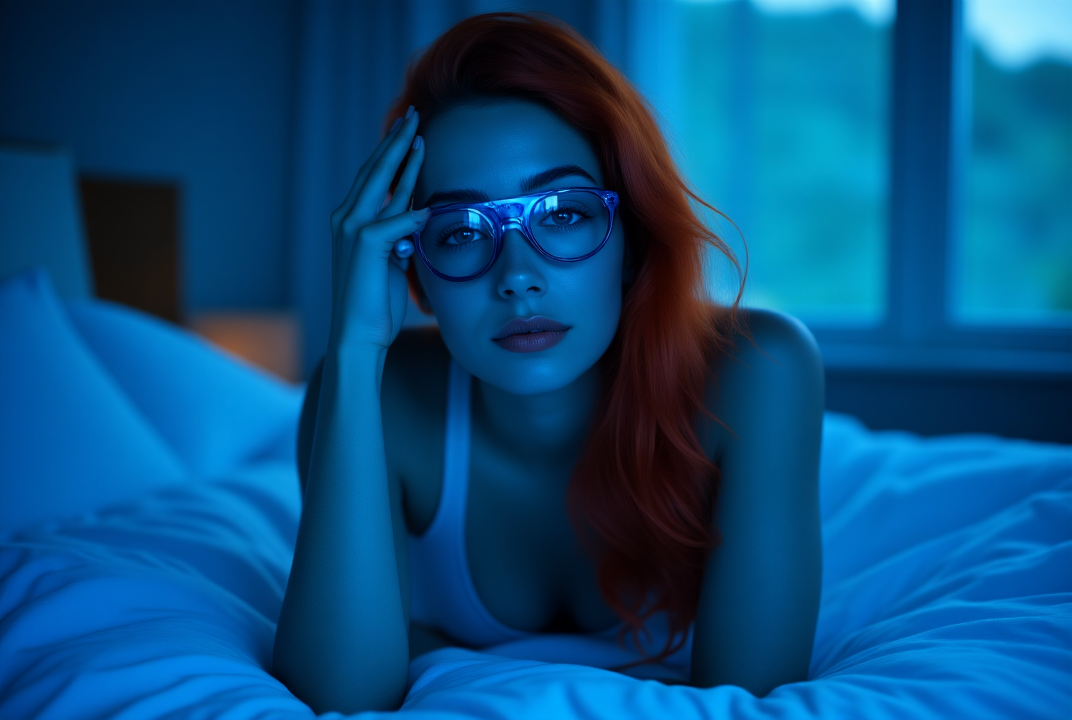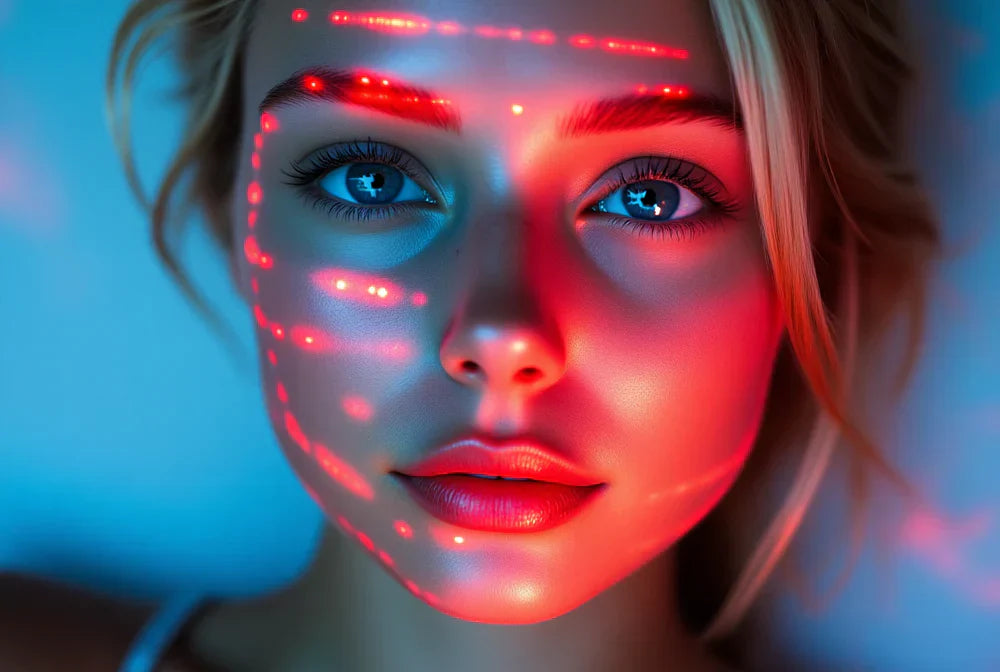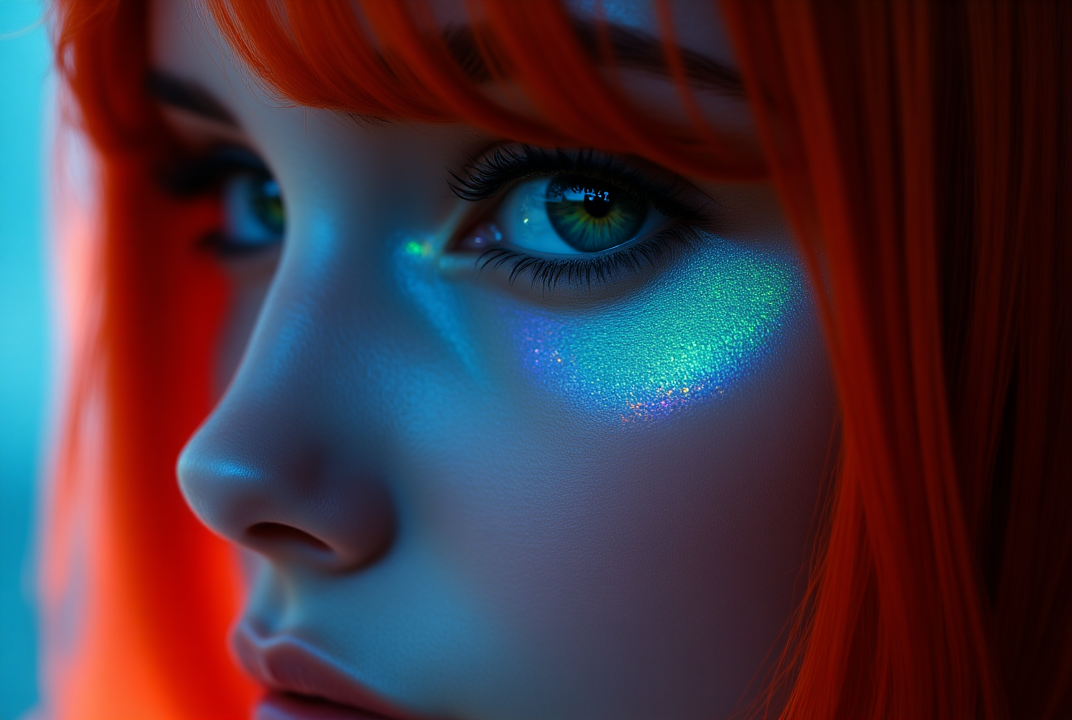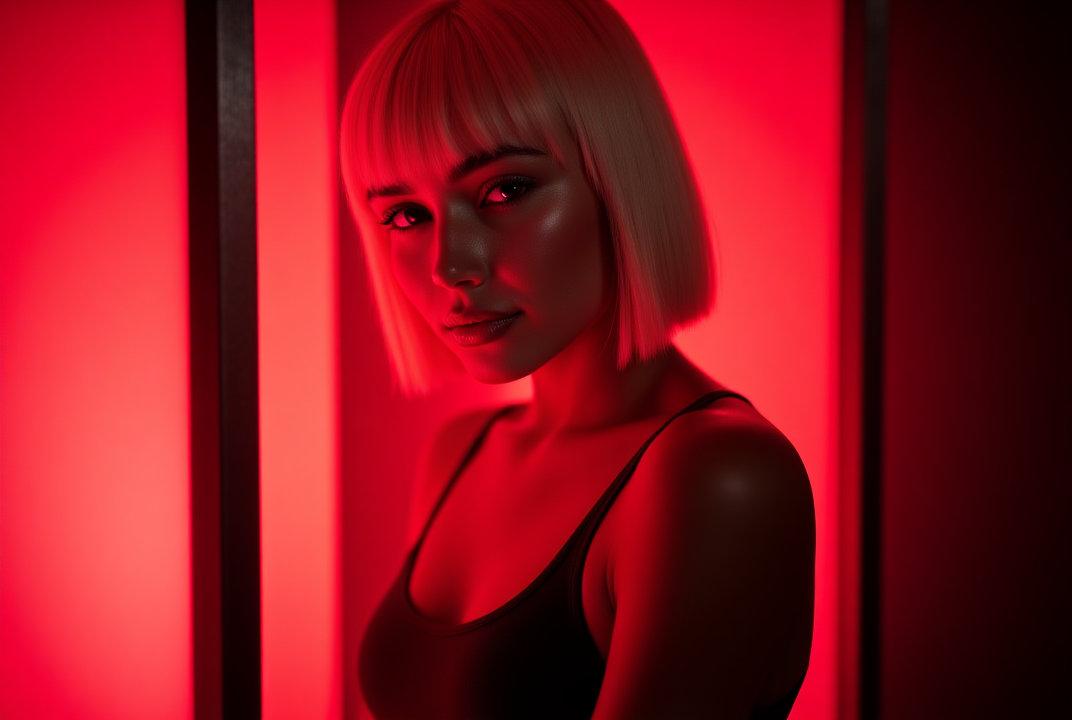The modern world thrives on technology, yet this digital dependency often comes at a cost—blue light headaches. Whether you're an office worker, student, or avid gamer, prolonged exposure to screens can lead to discomfort and disrupted sleep patterns. This article delves into the detrimental effects of artificial blue light and presents a step-by-step strategy to mitigate its impact, empowering you to reclaim your comfort and productivity.
What Is Blue Light Headache?
A blue light headache is a type of discomfort or pain experienced in the head, often resulting from prolonged exposure to artificial blue light emitted by digital screens such as computers, smartphones, and tablets. This type of headache is commonly associated with digital eye strain, where the eyes become fatigued due to extended screen time. The high-energy visible (HEV) blue light can penetrate deep into the eye, potentially causing irritation and discomfort. Additionally, exposure to blue light, especially during evening hours, can disrupt the body's natural circadian rhythm by suppressing melatonin production, leading to sleep disturbances and exacerbating headache symptoms. As digital devices become integral to our daily routines, understanding and mitigating the effects of blue light is crucial for preventing migraines, maintaining eye health, and ensuring overall well-being.
How To Get Rid Of Blue Light Headache: Step-by-Step
Step 1: Adjust Your Screen Settings
Begin by optimizing your screen settings to reduce blue light exposure. Most devices offer a "night mode" or "blue light filter" option that can be activated to decrease the intensity of blue light emitted. This setting often shifts the screen's color temperature to warmer tones, which are less straining on the eyes. Adjusting brightness and contrast to comfortable levels can also help minimize eye strain.
Step 2: Take Regular Breaks
Implement the 20-20-20 rule to give your eyes regular rest. Every 20 minutes, take a 20-second break and focus on something at least 20 feet away. This practice helps reduce eye fatigue and prevents the onset of headaches by allowing your eyes to relax and refocus, breaking the continuous strain from close-up screen viewing.
Step 3: Use Blue Light Blocking Glasses
Invest in a quality pair of blue light blocking glasses to protect your eyes from excessive blue light exposure. These glasses are designed to filter out harmful blue light wavelengths, reducing eye strain and improving visual comfort during prolonged screen use. For optimal results, wear daytime glasses while working indoors and switch to nighttime glasses with red lenses after sunset to preserve melatonin levels and support better sleep quality.
Step 4: Create a Balanced Lighting Environment
Ensure your workspace is well-lit with a combination of natural and artificial lighting. Avoid working in dark environments where the contrast between the screen and surroundings is high. Use warm, ambient lighting to reduce glare and reflections on your screen. Consider using EMR red bulbs in the evening to further support circadian rhythm optimization and minimize blue light exposure.
Step 5: Limit Screen Time Before Bed
To prevent blue light-induced sleep disruptions, establish a routine that limits screen time at least an hour before bedtime. Engage in relaxing activities such as reading a book, meditating, or listening to music to unwind. This practice helps your body naturally prepare for sleep, reducing the likelihood of headaches and improving overall sleep quality.
What Is The Average Recommended Screen Time To Avoid Blue Light Headache?
The average recommended screen time to avoid blue light headaches varies depending on individual tolerance and lifestyle needs, but a general guideline is to limit continuous screen exposure to about two hours at a time. Incorporating regular breaks, such as the 20-20-20 rule—taking a 20-second break to look at something 20 feet away every 20 minutes—can significantly reduce eye strain, dry eyes, and the likelihood of developing headaches. For those whose work or activities require prolonged screen use, it's crucial to balance screen time with periods of rest and incorporate protective measures like blue light blocking glasses. Additionally, reducing screen exposure in the evening, particularly an hour before bedtime, can help prevent disruptions to sleep patterns and further mitigate the risk of headaches. By being mindful of screen time and integrating these practices, individuals can maintain eye health, reduce digital eye strain, and ensure comfort in a digital-centric environment.
How Long Does Blue Light Headache Last?
The duration of a blue light headache can vary significantly depending on individual sensitivity and the extent of exposure to digital screens. Typically, these headaches can last anywhere from a few minutes to several hours. For some individuals, symptoms may persist until they take steps to alleviate the underlying causes, such as reducing screen time, adjusting lighting conditions, or using blue light blocking glasses. In cases where headaches are frequent and prolonged, it may indicate a need for more comprehensive lifestyle adjustments or professional consultation to address potential eye strain or other contributing factors. By implementing preventative measures and taking regular breaks, individuals can often reduce the frequency and duration of blue light headaches.
What’s The Best Way To Prevent Blue Light Headaches Long-Term?
Blue light blocking glasses are an effective long-term solution for preventing blue light headaches by filtering out the high-energy visible (HEV) blue light emitted from digital screens. These glasses are designed to reduce eye strain and discomfort by blocking or absorbing blue light wavelengths, thereby minimizing the impact on the eyes and the body's circadian rhythm. By wearing blue light blocking glasses, especially during extended screen sessions and in the evening, individuals can maintain optimal melatonin levels, enhance sleep quality, and reduce the risk of headaches associated with prolonged digital exposure. Available in various styles and lens types, these glasses cater to both daytime and nighttime needs, offering a practical and stylish approach to safeguarding eye health and overall well-being in our increasingly digital world.
Daily Tips For Preventing Blue Light Headaches
- Use Blue Light Blocking Glasses: Wear these glasses during extended screen time to filter out harmful blue light and reduce eye strain.
- Follow the 20-20-20 Rule: Every 20 minutes, take a 20-second break to look at something 20 feet away, giving your eyes a chance to rest.
- Adjust Screen Settings: Enable night mode or blue light filters on your devices to decrease blue light emission and ease eye discomfort.
- Optimize Lighting: Ensure your workspace is well-lit with warm, ambient lighting to minimize glare and reduce contrast with your screen.
- Limit Evening Screen Time: Avoid screens at least an hour before bed to prevent sleep disruption and reduce the risk of headaches.
Conclusion
In conclusion, navigating the digital landscape requires mindful strategies to combat the pervasive issue of blue light headaches. By understanding the impact of artificial blue light on our eyes and overall well-being, we can implement effective measures such as using blue light blocking glasses, optimizing screen settings, and taking regular breaks to alleviate discomfort. Embracing a balanced approach that includes limiting screen time, especially in the evening, and creating a conducive lighting environment can significantly enhance our comfort and productivity. As we continue to rely on digital devices, these proactive steps empower us to protect our eye health and maintain a harmonious relationship with technology, ensuring that we thrive in both our professional and personal lives.
Final Thoughts
Looking for effective ways to prevent blue light headaches? Discover the innovative offerings at EMR-TEK, where products are designed to integrate effortlessly into your daily routine. Whether you need a portable device for on-the-go convenience or a comprehensive system for home or professional settings, EMR-TEK has you covered. Their blue light glasses are expertly crafted to provide relief by reducing eye strain and protecting your vision, making them an essential part of your wellness toolkit. Explore our selection of red light therapy products and embark on a path to healthier, more luminous skin today.
Sources
-
https://www.health.harvard.edu/staying-healthy/blue-light-has-a-dark-side
-
https://www.allaboutvision.com/conditions/myopia/screen-time-by-age/
-
https://www.medicalnewstoday.com/articles/screen-headaches-and-migraines
Disclaimer:* EMR-TEK’s red infrared light therapy devices, blue light blocking glasses, and other products are intended solely for personal wellness and fitness use. They are not designed to diagnose, treat, cure, or prevent any disease and should not be considered medical devices. We do not make any therapeutic claims. Our products align with the FDA’s “General Wellness: Policy on Low Risk Devices” guidelines and do not require FDA clearance. Please note, EMR-TEK’s products are for personal use only and not for commercial application.*




Share:
Does Kindle Have Blue Light: Blue Light Protection
Blue Light Filters vs Glasses: What’s The Difference?